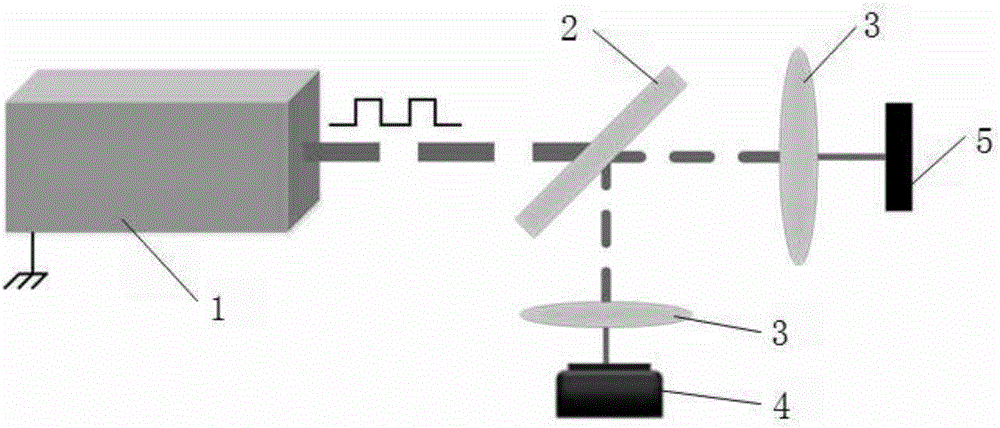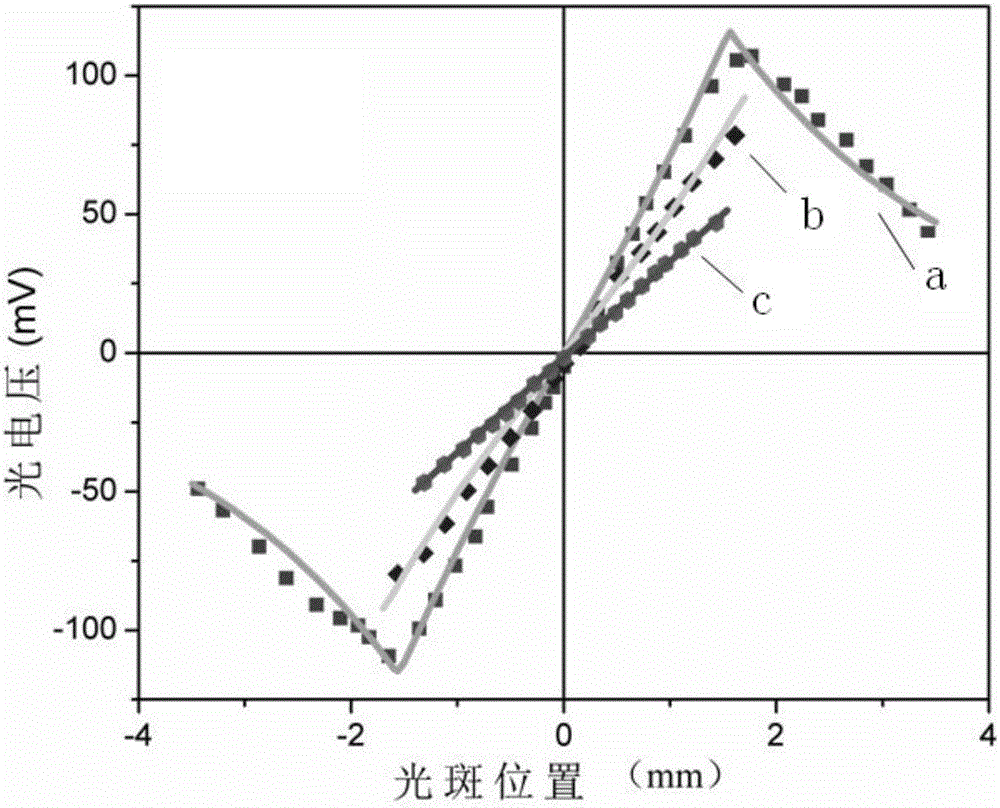Near-ultraviolet photopotentiometric sensor with fast photoelectric recovery response and preparation method thereof
A near-ultraviolet light and sensor technology, which is applied in the field of sensors, can solve problems such as the need for shading sheets, and achieve the effect of stable chemical properties and simple structure
- Summary
- Abstract
- Description
- Claims
- Application Information
AI Technical Summary
Problems solved by technology
Method used
Image
Examples
specific Embodiment approach 1
[0026] Specific Embodiment 1: The near-ultraviolet photopotential sensor with fast photoelectric recovery response in this embodiment has a metal oxide-SiC structure, and a metal oxide layer with a thickness of 10-60 nm is deposited on a β-SiC substrate by laser pulses, wherein The metal oxide is Fe 3 o 4 , Al-ZnO, In 2 o 3 or F-SnO 2 .
specific Embodiment approach 2
[0027] Embodiment 2: This embodiment differs from Embodiment 1 in that a metal oxide layer with a thickness of 15-30 nm is deposited on the β-SiC substrate by laser pulses.
specific Embodiment approach 3
[0028] Specific embodiment three: The preparation method of the near-ultraviolet photoelectric potential sensitive sensor with fast photoelectric recovery response in this embodiment is implemented according to the following steps:
[0029] 1. The metal oxide powder is pressed into tablets by a mold, and then sintered at 900-1100°C to obtain a metal oxide target;
[0030] 2. Place the β-SiC substrate in deionized water, acetone and absolute ethanol in order to ultrasonically clean it for 10-20 minutes, respectively, to obtain the cleaned SiC substrate;
[0031] 3. Vacuum the background to 3×10 -4 Pa~5×10 -4 Pa, take the cleaned SiC substrate as the deposition substrate, feed pure oxygen to control the air pressure to 0.01-20Pa, adjust the temperature of the SiC substrate to 300-500°C, and use the excimer laser to irradiate the metal oxide target, control The single pulse energy is 100-200mJ, and the pulse frequency is 1-5Hz for pulse laser deposition of metal oxide layer. Af...
PUM
 Login to View More
Login to View More Abstract
Description
Claims
Application Information
 Login to View More
Login to View More - R&D
- Intellectual Property
- Life Sciences
- Materials
- Tech Scout
- Unparalleled Data Quality
- Higher Quality Content
- 60% Fewer Hallucinations
Browse by: Latest US Patents, China's latest patents, Technical Efficacy Thesaurus, Application Domain, Technology Topic, Popular Technical Reports.
© 2025 PatSnap. All rights reserved.Legal|Privacy policy|Modern Slavery Act Transparency Statement|Sitemap|About US| Contact US: help@patsnap.com



